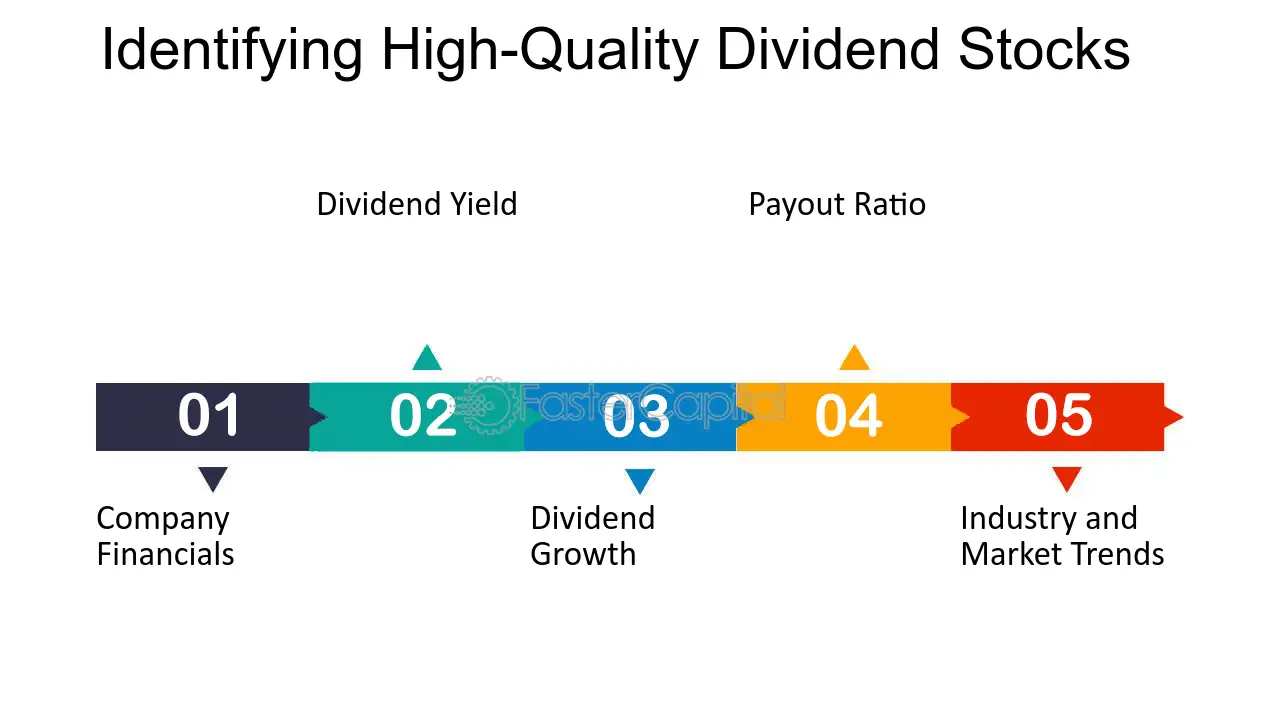
Are you tired of feeling like your finances control you instead of the other way around? It’s time to take charge and create a budget that works for your unique situation. Budgeting is an incredibly powerful tool that gives you financial control and helps you achieve your goals. But it’s not a one-size-fits-all process. A personalized budget tailored to your income, expenses, and goals is key to success.
In this step-by-step guide, you’ll learn exactly how to create and maintain a budget that works for you. From understanding your financial situation to setting realistic goals and implementing a plan, each section will empower you to make informed decisions about your money. So, get ready to transform your financial future and discover a budgeting process that finally clicks.
Let’s get started!
Section 1: Understanding Your Financial Situation
The first step to creating a budget that works is getting a clear picture of your financial situation. This involves calculating your net income, tracking your expenses, and analyzing your spending patterns.
Calculate Your Net Income
Your net income is your take-home pay after all the necessary deductions, including taxes, retirement contributions, and insurance. It’s the amount you have available to spend and save each month. To calculate your net income, start by identifying your gross income sources, such as your salary, investments, or any side hustles. Then, deduct all the mandatory payments to arrive at your net income figure. For example, if you earn $5,000 per month but have $1,000 in tax deductions, $500 in retirement contributions, and $200 in insurance payments, your net income would be $3,300. Understanding your net income is crucial because it forms the foundation of your budget. It helps you determine how much money you have to work with and allocate to various expenses and financial goals.
Track Your Expenses
The next step is to track your expenses to understand where your money is going each month. This involves listing and categorizing your spending into fixed and variable expenses.
Fixed Expenses
Fixed expenses are those that remain relatively consistent each month and are necessary for your lifestyle. They include:
- Rent or mortgage payments
- Utilities (electricity, water, gas)
- Car payments
- Insurance (health, life, auto)
- Subscription services (internet, streaming platforms)
These expenses are usually essential and require regular payments to maintain your standard of living.
Variable Expenses
Variable expenses, on the other hand, tend to fluctuate more and are more discretionary. They include:
- Groceries
- Gas
- Entertainment (dining out, movies, hobbies)
- Clothing
- Gifts
These expenses can vary based on your choices and spending habits. For example, you might spend more on groceries in one month if you’re stocking up or less on entertainment if you’re saving for a vacation.
Tracking Techniques
To get an accurate picture of your spending, it’s important to record your daily expenses. Here are some effective tracking techniques:
- Use a notebook or spreadsheet: Write down every purchase you make, no matter how small. This helps you become more mindful of your spending habits.
- Utilize a budgeting app: There are many apps available that sync with your bank accounts and automatically categorize your transactions.
- Save receipts: Collect all your receipts and review them at the end of each day or week to log your spending.
Analyze Your Spending Patterns
Once you’ve tracked your expenses for a month or two, it’s time to analyze your spending patterns. Look for areas where you may be overspending or identify unnecessary expenses that can be cut back. For example, you may realize that you’re spending a significant amount on takeout or subscription services you rarely use.This analysis will help you identify areas for improvement and make more conscious decisions about your spending. It also highlights areas where you may need to allocate more funds to ensure your budget is realistic and sustainable.
Section 2: Setting Realistic Financial Goals
Budgeting is a powerful tool to help you achieve your financial aspirations. This section will guide you through setting realistic financial goals that motivate you to stick to your budget.
The Importance of Goal-Setting in Budgeting
Setting financial goals gives you a clear direction and motivation for creating and maintaining a budget. It provides a sense of purpose and helps you stay focused and committed to your plan. When you have specific goals in mind, it’s easier to make sacrifices and prioritize your spending accordingly.
Defining Short-Term and Long-Term Financial Goals
Financial goals can be categorized into short-term and long-term objectives. Short-term goals are those you want to achieve in the next 1 to 3 years. They are more immediate and often act as milestones towards your long-term vision. Examples include:
- Building an emergency fund to cover unexpected expenses
- Paying off high-interest credit card debt
- Saving for a down payment on a car
Long-term goals, on the other hand, are those that will take decades to achieve. They are your bigger-picture aspirations and may include:
- Retirement savings to ensure financial security in your golden years
- Funding your children’s education to give them a strong start in life
- Investing in real estate to build long-term wealth
Examples of Common Financial Goals
Here are some additional examples of financial goals that you may relate to:
- Eliminating student loan debt to reduce the burden of monthly payments
- Saving for a dream vacation to celebrate a special occasion
- Starting an investment portfolio to build wealth over time
- Paying off your mortgage early to own your home outright
Tips for Setting SMART Goals
To ensure your financial goals are achievable and provide a clear framework for your budget, use the SMART goal-setting technique:
- Specific: Define your goal clearly and specifically. Instead of saying, “I want to save more,” say, “I want to save $10,000 for a down payment on a new car.”
- Measurable: Ensure your goal has a clear metric for success. For example, “I want to pay off $5,000 of credit card debt in the next 12 months.”
- Achievable: Set goals that challenge you but are still realistic. Saving $1 million in a year might not be achievable for most, but saving $10,000 could be a stretch goal.
- Relevant: Ensure your goal aligns with your values and priorities. For instance, if you value travel, a goal to save for a dream vacation is relevant.
- Time-bound: Assign a deadline to your goal to create a sense of urgency and help you stay focused. “I will save $2,000 for an emergency fund in the next 6 months” is a time-bound goal.
Section 3: Creating Your Budget Plan
Now that you understand your financial situation and have set clear goals, it’s time to create your budget plan. This section will guide you through choosing a budgeting method, allocating funds, and prioritizing your expenses.
Choosing a Budgeting Method
There are several popular budgeting methods to choose from, and the right one for you will depend on your preferences and goals. Here are some common methods:
- The 50/30/20 Rule: This method suggests allocating 50% of your income to needs (housing, groceries, utilities), 30% to wants (entertainment, dining out), and 20% to savings and debt repayment.
- Zero-Based Budgeting: This approach requires that you allocate all your income to specific expenses, savings, or debt repayment, aiming for a balance of zero at the end of each month.
- Envelope System: This cash-based system involves allocating cash for different expense categories and placing it in envelopes. Once an envelope is empty, you stop spending in that category.
- Paycheck Budgeting: This method involves creating a new budget with each paycheck, ensuring you always have enough funds to cover expenses and goals.
Allocating Funds to Different Expense Categories
When creating your budget, you’ll need to decide how much money to allocate to various expense categories. This is where your analysis of spending patterns and financial goals comes into play.
Needs vs. Wants
First, differentiate between needs and wants. Needs are essential expenses required to maintain your standard of living, such as housing, transportation, and groceries. Wants are more discretionary and include things like entertainment, dining out, and hobbies. It’s important to prioritize needs over wants when allocating funds. Ensure that your necessities are covered first, and then allocate funds to wants if your budget allows.
Common Expense Categories
Here are some common expense categories you may want to include in your budget:
- Housing (rent or mortgage)
- Utilities (electricity, water, gas)
- Transportation (car payments, gas, public transit)
- Food (groceries, dining out)
- Insurance (health, life, auto, home)
- Healthcare (prescriptions, copays, dental)
- Childcare
- Education (tuition, books, supplies)
- Entertainment (streaming services, hobbies, vacations)
- Personal Care (haircuts, gym membership)
- Debt Repayment
- Savings
Prioritizing Expenses Based on Urgency and Importance
When allocating funds, it’s crucial to prioritize expenses based on their urgency and importance. This is where your financial goals come into play. For example, if you’re focused on paying off high-interest credit card debt, allocate more funds to that category. Here’s a suggested order of priority for allocating funds:
- Essential needs (housing, food, utilities)
- High-interest debt repayment
- Savings (emergency fund, retirement)
- Other financial goals (education, investments)
- Discretionary spending (wants)
Balancing Your Income and Expenses
The goal of budgeting is to balance your income and expenses, ensuring you’re not spending more than you earn. If your expenses exceed your income, you’ll need to make adjustments, such as cutting back on discretionary spending or finding ways to increase your income. Conversely, if you have surplus funds after allocating money to all your expenses and goals, you can choose to increase your savings rate or allocate more to discretionary spending.
Dealing with Surplus or Deficit Situations
If you find yourself with extra money at the end of the month, here are some options to consider:
- Increase your savings: Contribute more to your emergency fund or retirement savings.
- Pay off debt faster: Use the extra funds to make additional debt payments.
- Invest: Consider investing the extra money in stocks, bonds, or other assets.
- Enjoy some wants: Allocate a portion of the surplus to discretionary spending.
If you’re facing a deficit, where expenses exceed income, here are some strategies:
- Cut back on discretionary spending: Reduce expenses in the “wants” category.
- Reduce fixed expenses: Shop around for better insurance rates or negotiate existing rates.
- Increase your income: Pick up extra shifts or consider a side hustle.
Section 4: Implementing and Monitoring Your Budget

Creating a budget is just the first step. This section will guide you through the process of implementing and monitoring your budget to ensure it stays on track.
Tracking Your Transactions
To ensure you’re sticking to your budget, it’s important to track your spending and income. Here are some tools and techniques to help:
- Utilize a budgeting app: Many apps offer real-time tracking of your spending and can alert you if you’re close to exceeding your budget in a particular category.
- Use a spreadsheet: Create a simple spreadsheet to record transactions and calculate your budget balance.
- Set up account alerts: Most banks allow you to set up alerts for account activity, helping you monitor transactions and balances.
Adjusting Your Budget as Needed
Budgeting is an iterative process, and it’s normal to make adjustments along the way. Here are some scenarios that may require budget adjustments:
- Reallocating funds: If you consistently spend more in one category and less in another, consider reallocating funds to reflect your actual spending patterns.
- Cutting expenses: If you’re consistently spending more than you earn, look for areas to cut back, starting with discretionary spending.
- Increasing income: If your income increases, decide how to allocate the extra funds to support your financial goals.
Automating Savings and Debt Payments
To make your budget more efficient and ensure you’re consistently working towards your financial goals, consider automating your savings and debt payments.
- Automatic transfers: Set up automatic transfers from your paycheck or monthly income to your savings or investment accounts.
- Bill payments: Most banks allow you to set up automatic bill payments for regular expenses, ensuring you never miss a payment.
- Debt payments: Automate your debt payments to ensure you’re consistently chipping away at your debt.
Involving Family Members or Partners
If you share finances with a partner or family, it’s important to involve them in the budgeting process. Here are some tips for successful collaboration:
- Communicate regularly: Discuss financial goals, priorities, and progress to ensure everyone is on the same page.
- Make it a team effort: Encourage everyone to track their spending and suggest ways to save.
- Compromise and negotiate: Understand that everyone has different spending habits and preferences. Find a middle ground that works for all.
Celebrating Small Wins and Staying Motivated
Sticking to a budget can be challenging, so it’s important to celebrate small wins along the way to stay motivated. Here are some ideas:
- Treat yourself: If you’ve been consistently saving, allow yourself a small treat, like a nice dinner out or a massage.
- Visualize your progress: Create a visual representation of your debt repayment progress or savings growth to remind you of your achievements.
- Set milestone rewards: Celebrate when you reach a specific savings goal or pay off a chunk of debt.
Section 5: Maintaining and Refining Your Budget
Budgeting is an ongoing process that requires regular maintenance and refinement. This section will guide you through reviewing your budget, accounting for irregular expenses, and adjusting for life changes.
Reviewing Your Budget Regularly
To ensure your budget remains effective and relevant, it’s important to review it frequently. Here are some suggested review frequencies:
- Weekly: A quick weekly check-in can help you identify any areas where you’re overspending and allow you to make minor adjustments.
- Monthly: A more detailed monthly review is a chance to assess your progress toward financial goals and make any necessary reallocations.
- Quarterly: Every three months, take a step back and evaluate your overall financial situation, including income, expenses, and goals.
- Annually: An annual review is an opportunity to reflect on the bigger picture and make long-term adjustments to your budget and financial plan.
Accounting for Irregular or Seasonal Expenses
Some expenses don’t occur monthly and can catch you off guard if you’re not prepared. Here are some strategies to handle irregular or seasonal expenses:
- Annual expenses: Calculate the total annual cost and divide it by 12, then set aside that amount each month. For example, if your car insurance is $1,200 per year, save $100 each month.
- Seasonal expenses: Plan for seasonal costs like holiday gifts or summer vacations by setting aside a small amount each month.
- Emergency fund: Build an emergency fund to cover unexpected costs, such as car repairs or medical bills. Aim for 3-6 months’ worth of living expenses.
Adjusting Your Budget to Reflect Life Changes
Life is full of surprises, and your budget should be flexible enough to accommodate them. Here are some common life changes that may require budget adjustments:
- Income changes: If your income increases or decreases, adjust your budget accordingly. A higher income might mean more funds for savings or discretionary spending, while a decrease might require cutting back.
- Expenses changes: As your expenses change, perhaps due to having a child or moving to a new city, update your budget to reflect the new financial reality.
- Goal adjustments: As your priorities shift, so should your financial goals. Update your budget to reflect any changes in your short-term or long-term goals.
Seeking Support and Accountability
Sticking to a budget can be challenging, and it’s helpful to have support and accountability. Here are some resources to consider:
- Online communities: Join personal finance forums or Facebook groups to connect with others on a similar journey.
- Financial advisors: Consider working with a financial professional who can provide guidance and help keep you accountable.
- Budgeting apps: Many budgeting apps offer community features, allowing you to connect with others and share progress.
Section 6: Budgeting for Specific Goals
In this section, we’ll dive into specific strategies for budgeting toward common financial goals, including emergency funds, debt repayment, retirement savings, and more.
Budgeting for an Emergency Fund
An emergency fund is a crucial component of financial security. Here’s how to budget for it:
- Determine your target amount: Aim for 3-6 months’ worth of living expenses. Calculate your monthly expenses and multiply by the number of months you want to cover.
- Set a timeline: Decide how quickly you want to reach your target. For example, you might aim to save $1,000 in the first 3 months and then contribute smaller amounts over the next 9 months.
- Automate your savings: Set up automatic transfers to build your emergency fund without having to remember to transfer funds manually.
Budgeting for Debt Repayment
Paying off debt is a common financial goal. Here are two popular methods:
- Snowball method: Focus on paying off the smallest debts first, gaining momentum as you knock out each balance. This method provides quick wins and motivation.
- Avalanche method: Target debts with the highest interest rates first to minimize the total interest paid over time. This method is more financially optimal but may take longer to see progress.
- Budgeting for debt repayment: Allocate funds in your budget specifically for debt repayment. Prioritize making the minimum payments on all your debts, then focus any extra funds on the targeted debt.
Budgeting for Retirement Savings
Planning for retirement is a long-term financial goal. Here’s how to budget for it:
- Employer-sponsored plans: If your employer offers a retirement plan, such as a 401(k) or pension, contribute enough to maximize any employer match. This is essentially free money towards your retirement.
- Individual Retirement Accounts (IRAs): If you don’t have access to an employer-sponsored plan or want to save more, consider opening a Roth or Traditional IRA. Each has different tax advantages, so research which is best for your situation.
- Automate your contributions: Just like with emergency savings, automate your retirement savings by setting up regular contributions from your paycheck or bank account.
Budgeting for Other Long-Term Goals
In addition to retirement, you may have other long-term financial goals. Here are some common ones and budgeting strategies:
- Education: If you’re saving for a child’s education, consider opening a 529 plan, which offers tax advantages for education savings. You can also use savings accounts or invest in mutual funds.
- Travel: Create a separate savings account specifically for travel and automate contributions. Research the expected costs of your dream trips to help guide your savings rate.
- Homeownership: If you’re saving for a down payment on a home, calculate the target amount you’ll need and set a timeline. Consider the additional costs of homeownership, such as maintenance and repairs.
Section 7: Common Budgeting Challenges

Budgeting isn’t always easy, and it’s normal to encounter challenges along the way. This section will provide solutions to common budgeting hurdles.
Dealing with Irregular or Variable Income
If your income fluctuates from month to month, budgeting can be tricky. Here are some strategies to help:
- Average your income: Calculate your average monthly income over the past year to create a baseline for budgeting.
- Base your budget on the lowest income month: This ensures that your essential needs are covered even in the leanest months. Any surplus in higher-income months can go towards savings or discretionary spending.
- Build an income buffer: Save enough to cover at least one month’s worth of essential expenses. This provides a cushion during lower-income months.
Overcoming Overspending and Impulse Purchases
If you find yourself consistently overspending, try these strategies:
- Identify triggers: Understand what prompts impulse purchases, whether it’s stress, boredom, or something else. Awareness is the first step to making a change.
- Implement a waiting period: When you feel the urge to make an impulse purchase, commit to waiting 24 hours. Often, the desire to buy will pass, and you’ll realize you don’t need the item.
- Leave your credit card at home: Carry only the cash you’ve allocated for discretionary spending. This forces you to stay within your budget and makes it impossible to overspend.
Handling Unexpected Expenses or Emergencies
Life is full of surprises, and your budget should be flexible enough to handle them. Here’s how to prepare:
- Build an emergency fund: As mentioned earlier, an emergency fund is crucial for covering unexpected costs. Aim for 3-6 months’ worth of living expenses.
- Prioritize and reallocate: If you’re faced with an unexpected expense, prioritize it in your budget and reallocate funds from less urgent categories.
- Cut back on discretionary spending: Reduce spending on wants to free up funds for unexpected costs.
Budgeting as a Couple or Family
Combining finances with a partner or budgeting as a family introduces new challenges and considerations:
- Communicate openly: Discuss financial goals, priorities, and spending habits regularly. Be transparent about any debts or financial obligations.
- Find common ground: Understand that you may have different spending styles and preferences. Work together to find a compromise that respects both perspectives.
- Set shared goals: Define financial goals that you can work towards together, such as saving for a dream vacation or a down payment on a home.
Conclusion:
Creating and maintaining a budget is a powerful step toward achieving financial freedom and security. It gives you control over your money and helps you reach your goals, whether that’s paying off debt, saving for retirement, or something else entirely.
Remember, budgeting is a highly personalized process, and there is no one-size-fits-all approach. The most important thing is to find a system that works for you and your unique situation. Don’t be afraid to make adjustments along the way as life throws surprises your way.
Finally, stay motivated by celebrating your small wins and keeping your eyes on the bigger picture. Budgeting is a journey, and it takes time to form new financial habits. With patience, perseverance, and the right tools, you’ll be well on your way to financial success.
Happy budgeting!
Final Tip: If you’re just starting, don’t try to change everything at once. Focus on one or two key areas of your budget and make gradual adjustments. Slow and steady wins the race!














